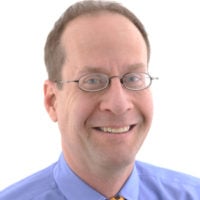Maybe it’s because I first started working on clean energy while serving in the Peace Corps he founded, or maybe it’s my years of working on these issues from his home state. But I can’t help thinking about the 100th anniversary of John F. Kennedy’s birth, and connecting his stirring rhetoric to the energy challenges of our times.
Here’s what our 35th president might have said about the challenges of energy transition and the opportunities in clean energy.
“Change is the law of life. And those who look only to the past or present are certain to miss the future.”
This tidbit of wisdom from the Sage of Hyannis needs no updating to make it applicable to clean energy. Our electricity sector has gone through a lot of changes since Thomas Edison set up the world’s first electrical grid on the Lower East Side in 1882. But we’re clearly in a time of unparalleled transformation.
Yeah, that means over time we have to figure out new business models to make it all hold together. But a clean energy future is one we want to make certain not to miss, so it’s worth figuring out.

JFK harnessing wind power (Source: JFK Library)
“We choose to [do clean energy]… not because [it is hard], but because [it is easy].”
This one required just a bit of tweaking. In his famous 1962 “moon” speech at Rice University, Pres. Kennedy suggested that “We choose to go to the moon in this decade and do the other things, not because they are easy, but because they are hard…”
In our case, though, in a lot of ways, clean energy is actually the easier route. Yes, there are (again) issues of financial engineering—who gets compensated, and how, when part of the power is coming from my own roof, for example. And there are some technical issues (though fewer than opponents would have you think) as more solar and wind power add variability to the electricity supply-demand picture, for example.
But think about power plants like solar and wind ones that require no fuel delivery. How about not having to worry about air or water pollution, or water use, or catastrophic failures? How about being able to spend more energy dollars on people, and less on million-year-old rock? How about meeting energy demand with less energy, not more, with efficient lighting, motors, and appliances?
Sure sounds simpler.

Inaugural Address of John F. Kennedy, 1961 (Credit: U. S. Army Signal Corps, JFK Library, Boston)
“Let us not seek the Republican answer or the Democratic answer, but the right answer.”
Here again, JFK was right on the first time around. People from across the political spectrum find plenty to love in clean energy.
Clean energy means jobs, in manufacturing, installation, servicing, and so much more. It can mean revenues for communities and landowners who host renewable energy. For farmers and ranchers, for example, as a dairy farmer in upstate New York put it to me recently, wind farms can be “a godsend”.
Similarly, on pollution: Whatever box they check on voter registration forms, people want healthy air and clean water for their communities and their kids.
Clean energy’s broad appeal means that we can find leadership and support in a range of places (and colors). In our recent analysis of state leadership on clean energy momentum, six of the top states overall are headed by Democrats, and four by Republicans. And a solid majority of Americans across the country support action on renewable energy, including funding research (more than four out of five) and even requiring utilities to get at least 20% of their electricity from renewables (two out of three).
Clean energy is so often the right answer, regardless of what politics are flavoring the question.

Estimated portion of adults who support requiring utilities to produce 20% electricity from renewable sources. Americans in every single congressional district (you listening, Washington?) want more renewables. (Source: Yale Program on Climate Change Communication)
“Ask not what your [grid] can do for you… ask what you can do for your [grid].”
What is arguably JFK’s most famous quote, from his inaugural address, invited us to rethink our relationship to our country, to reposition ourselves not just as recipients, but as contributors. In the energy world, distributed energy technologies have dramatically improved our chances of doing that in recent years.

What you can do for your grid. (Credit: John Rogers)
In our recent clean energy momentum state ranking, one of our metrics had to do with that changing relationship, via solar. “The arrival of affordable rooftop solar,” we suggested, “represents a major shift in the connections between households and their electricity supplies.”
Harnessing the power of sunbeams and silicon, we can turn our roofs into mini power plants, and generate electricity not just to meet our own needs but to help utilities and the local electricity grids meet peak power demands on hot, sunny days. Actually, a range of new technologies (energy storage, anyone?) and approaches are letting us be much more active participants in making the electricity grid work for all.
So go ahead, ask what you can do for your grid. The answer is plenty.
“Efforts and courage are not enough without purpose and direction.”
Right again. So we move to clean energy, with purpose and direction (we hope), because we can, and because we must. In his moon speech, after the part about “easy” and “hard”, JFK went on to say this about aiming high:
…because that goal will serve to organize and measure the best of our energies and skills, because that challenge is one that we are willing to accept, one we are unwilling to postpone, and one which we intend to win…
Unwilling to postpone, and intending to win. Words to live by.
Happy birthday, Mr. President. And thanks.

